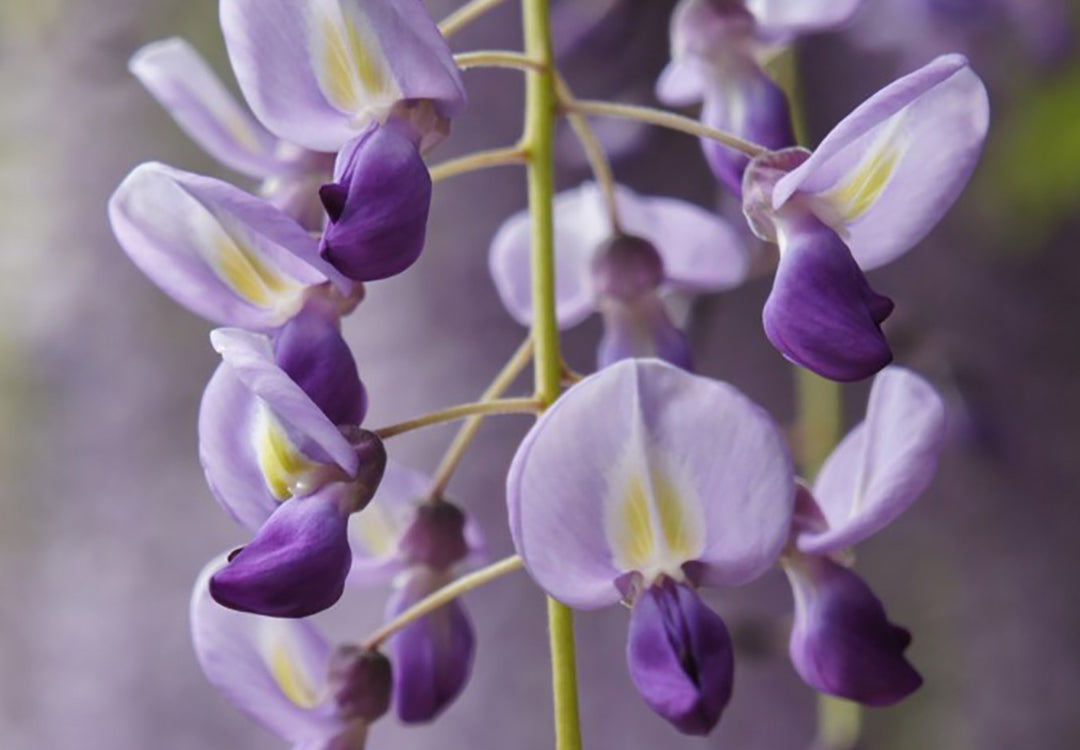
The legume family is one of the best families to learn early in your plant identification journey because they’re easy to identify and you’ll notice members everywhere you go.
This is one of the largest dicot families around, and while most of the plants have a lot in common, there are branches of the family that don’t conform to all of the patterns discussed here.
Description
The easiest way to identify members is through their fruits, seeds and irregular flowers that may be singular or in an inflorescence, often racemous.
When looking at a flower face-on, you can see 5 petals in a very distintive formation of a banner at the top like a billboard, and wings and keel jutting out below.

Cowpea flower, Vigna unguiculata. Image source
Fabaceae plants tend to have a habit that’s upright, ground covering or climbing. Some members, such as wattles, can be shrubs or trees.
Flowers, Fruits & Leaves
Sepals: Generally sepals are fused.
Petals: One petal forms the double-lobed banner, two form the wings, and two petals form the keel, though they may be fused together.
Reproductive: Bisexual flowers are the norm, however male and female organs aren’t usually visible without peeling back the wings and keel.
Fruit: The ovary develops into a (usually dehiscent) seed pod called a legume with multiple peas.
Seeds: Perhaps you’ve dissected a pea or bean on your plate before. You can peel back the seed coat to expose the little baby shoot with dicotoledenous wings.
Leaves: They are usually alternate and compound, whether that’s trifoliate, oddly or evenly, palmly or pinnately compound.
Noteworthy Types
Phaseolus vulgaris is the scientific name for the common bean. Subspecies include black beans, navy beans, kidney beans and cannellini beans.

Red, white and black kidney beans, Phaseolus vulgaris. Image source
Pisum sativum is the regular garden pea and has several subspecies including snow peas, snap peas, field peas and green peas. Though this is the true pea plant, the term pea is often used loosely and may refer to other plants.

Green pea pod and flowers, Pisum sativum. Image source
The Trifolium genus is home to the clovers, so named because of their trifolately compound leaves though some varieties have more leaflets than 3. Look out for a lucky four-leafed clover, and enjoy the pretty umbels or racemes as you search.

Clover Trifolium repens inflorescence. Image source
Roots of the liquorice plant Glycyrrhiza glabra is responsible for a flavour that can divide opinions.

Liquorice leaves and flowers Glycyrrhiza glabra. Image source
Members of the Mimosoideae (wattle) subfamily do not share the same flower structure; in fact their flowers look nothing like other family members, however they do have bean pods and an ability to fix nitrogen.

Wattle flowers, leaves and seed pod, Acacia confusa. Image source
The Wisteria genus is a deciduous ornamental climber that is prized in horticulture for its beautiful pendulous racemous inflorescences, usually purple, pink or white. Do not eat the flowers or legumes of this plant as they are poisonous.

Wisteria leaves and flowers, Wisteria sp. Image source
Conclusion
Beans are the most common example of a dicot seed used in biological diagrams for a reason; can you name a better example of a seed that showcases the cotyledons in a dicot plant?
If you haven’t already read my articles on plant identification and scientific names, I recommend reading those to get a broader picture of the topic. Alternatively, you can browse some of my other plant families, subfamilies and genera below.
